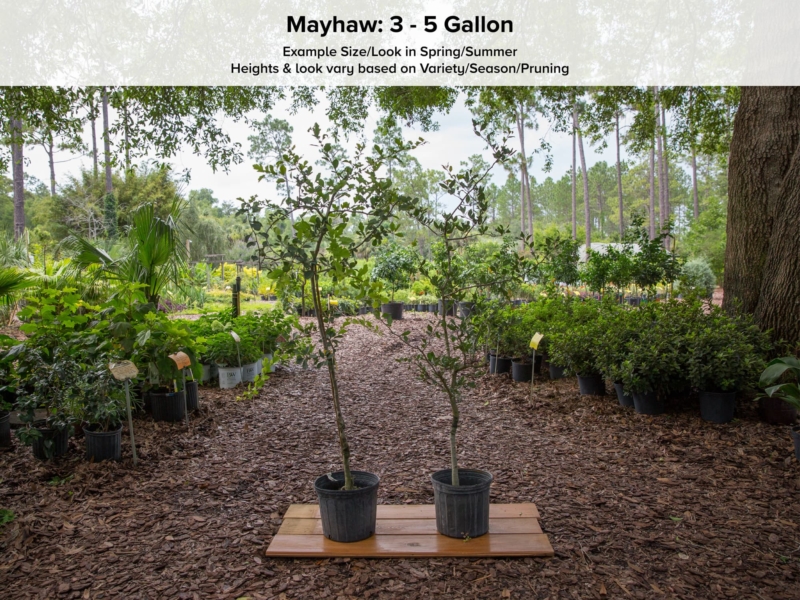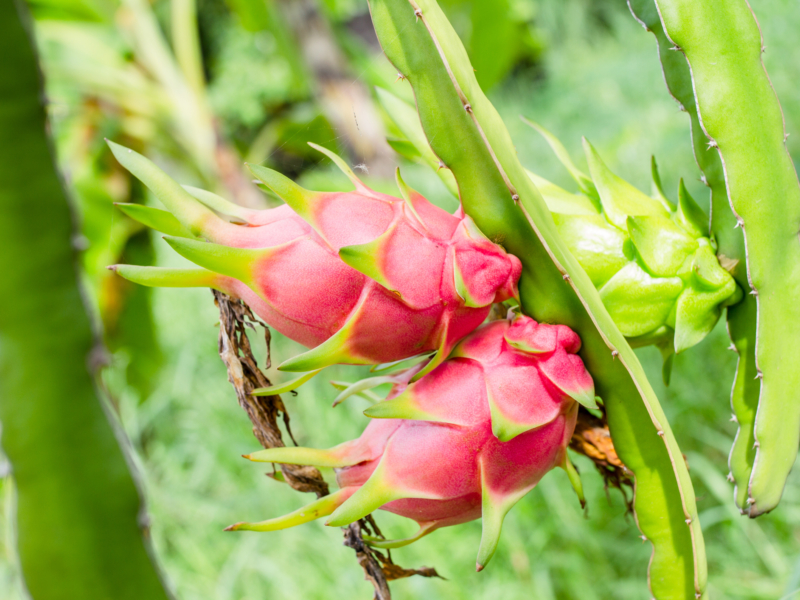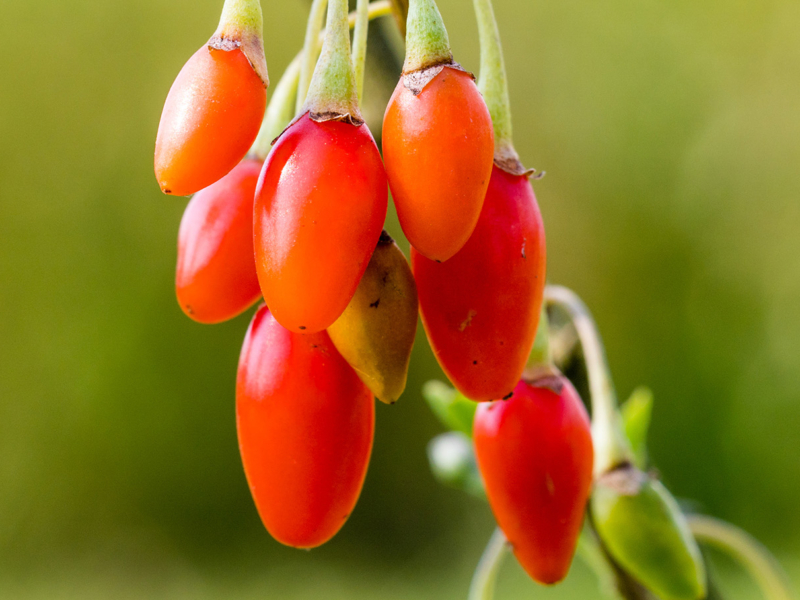Surprise Mayhaw Tree
100% Shipped in Pot, Just like buying in person.
The Surprise Mayhaw Tree is a stunning addition to any garden, with its vibrant foliage and bountiful fruit. Order online now to enjoy the beauty and deliciousness of this unique tree in your own backyard.
Out of Stock
This product is currently not in stock. Please add it to your wishlist to be notified when it’s available.
- Product Description
- Planting & Care
- Shipping Info
Surprise Mayhaw Tree: Unveil Nature’s Hidden Gems
About the Fruit
The Surprise Mayhaw Tree is a rare delight for berry aficionados and a true Southern treasure. These small, crimson jewels are renowned for their unique tart-yet-sweet flavor profile. Mayhaws are traditionally used to create delectable jellies or can be enjoyed fresh, offering a burst of refreshing taste with every bite. Their distinctive flavor and versatility in the kitchen make them an unexpected surprise in any fruit collection.
What to Know About the Tree
A Mayhaw tree is a sight to behold with its graceful, spreading canopy and charming white flowers that herald the arrival of spring. This deciduous tree is known for its hardiness and adaptability, thriving in wet, acidic soils where other fruit trees may struggle. Standing at a moderate height, Mayhaws can be a focal point in any garden or a complementary addition to a diverse orchard.
Harvest Season
The Surprise Mayhaw Tree gifts its harvest in the late spring, typically May, hence its name. The sight of the tree laden with clusters of scarlet fruit is not only visually stunning but also signals a time of bounty. Gardeners can look forward to collecting these precious berries, which hold the promise of homemade preserves and delightful treats to savor and share.
Enhancing Your Fruitscape™
Imagine your outdoor sanctuary enriched by the Surprise Mayhaw Tree, an exquisite addition to your personal fruitscape™. This tree doesn’t just bring an annual harvest of delectable berries; it also contributes year-round beauty with its seasonal transformations. In spring, it’s adorned with fragrant blossoms, and in fall, the foliage turns a lovely golden hue. The Surprise Mayhaw’s manageable size and ornamental qualities make it perfect for integrating into an edible landscape design, offering both visual pleasure and practical rewards.
At Just Fruits and Exotics, we pride ourselves on delivering a seamless, in-person shopping experience online. Each tree is shipped 100% in pot, with superior packaging to ensure safe and easy arrival at your doorstep. As a nationally renowned, trusted online plant nursery with a family touch, we are dedicated to helping you cultivate a vibrant and fruitful fruitscape™. Choose the Surprise Mayhaw Tree for a delightful twist in your garden and join our community of passionate plant enthusiasts today.
| Cold Hardy | 0-5° |
|---|---|
| Container Plant | No |
| Grafted | Yes, Eastern Mayhaw Seedlings 'crataegus sp.' |
| Growing Zone | 7A, 7B, 8A, 8B, 9A, 9B |
| Mature Height | 12-15FT |
| Mature Width | 8-10FT |
| Pollinator | Needs Another Late-Blooming Mayhaw Tree for Cross-Pollination (Reliable, Georgia Gem, Maxine) |
| Spacing | 8-10 FT |
| Sunlight | Part to Full |
Recommended Fertilizers
Starter Fertilizer: Kickstart with Espoma Organic Bio-tone® Starter Plus. This potent blend boosts root mass and aids in mitigating transplant shock, ensuring your plants thrive in their new home.
Maintenance Fertilizer: For continued growth and fruit production, we recommend Espoma Organic Tree-tone Fertilizer. Designed specifically for fruit trees, this balanced formula nourishes your plants, promoting vibrant growth and bountiful harvests.
Fruitscaping™ with Mayhaw Trees
Enrich your garden with an often overlooked Southern delight by Fruitscaping™ with our Mayhaw Trees. These highly adaptable trees offer fragrant blooms, vibrant autumn colors, and a distinctive fruit that is cherished across the South.
Mayhaw Trees are known for their white, fragrant spring blossoms, which give way to clusters of crimson to yellow-orange fruit, depending on the variety. Their attractive, hawthorn-like fruits are a delight to harvest and are often transformed into jellies, syrups, or wine, giving a unique Southern twist to your culinary explorations.
These trees are versatile, thriving in various soil conditions, although they do prefer moist, well-drained soils. The Mayhaw Trees also appreciate full to partial sun, helping to foster healthy growth and abundant fruit production. With their hardy nature and minimal pest and disease issues, they’re a low-maintenance option, even for the novice gardener.
As the trees mature, their lovely form provides an ornamental quality, making them an appealing addition to any landscape. Their lush green foliage turns to stunning shades of yellow and orange in the fall, adding a burst of color to your garden.
Mayhaw Trees stand out when grown as a focal point in your landscape. However, they can also be integrated into a mixed edible garden alongside other fruit trees, like pears and plums, creating a beautiful and bountiful garden space.
Embrace the excitement of Fruitscaping™ with Mayhaw Trees. From the journey of planting and caring to the thrill of harvesting your homegrown mayhaws, these trees offer a unique and rewarding gardening experience.
Growing Guides
You can find many planting & care guides on our growing guides page.
Shipping Restrictions
Unfortunately, We Cannot Process Orders to California, Hawaii, Alaska, or Internationally: Please note that due to specific agricultural regulations, we’re unable to ship any plants to the states of California, Hawaii, and Alaska, or outside the United States. Additionally, citrus trees can only be shipped within the state of Florida.
Shipping Information
Before Your Plants Arrive: You can find many guides on unpacking, planting, & care, on our growing guides page.
The Journey From Our Nursery to Your Door: We NEVER ship our plants bare root. Your plant will travel in the very container in which it was nurtured. We thoroughly prune and water them before packing, and make sure they’re well wrapped to retain moisture during transit. It’s as though you’ve personally collected them from our nursery!
Choose Your Ship Date: We understand you’ll want to be available when your plant arrives. Our checkout process features a handy calendar that allows you to choose the Monday on which you want your plant to ship. Depending on your location, you’ll likely receive your plant by Wednesday, Thursday, or Friday of that week. Once shipped, UPS will generate a tracking number and send it to the email you provided. You can then follow your plant’s journey and ensure someone is available to unpack it on arrival day.
Click Here To View Our Shipping Page For More Information & Packing/Unpacking Plants Videos
Growing Calendar
- Planting
- Pruning
- Harvest



